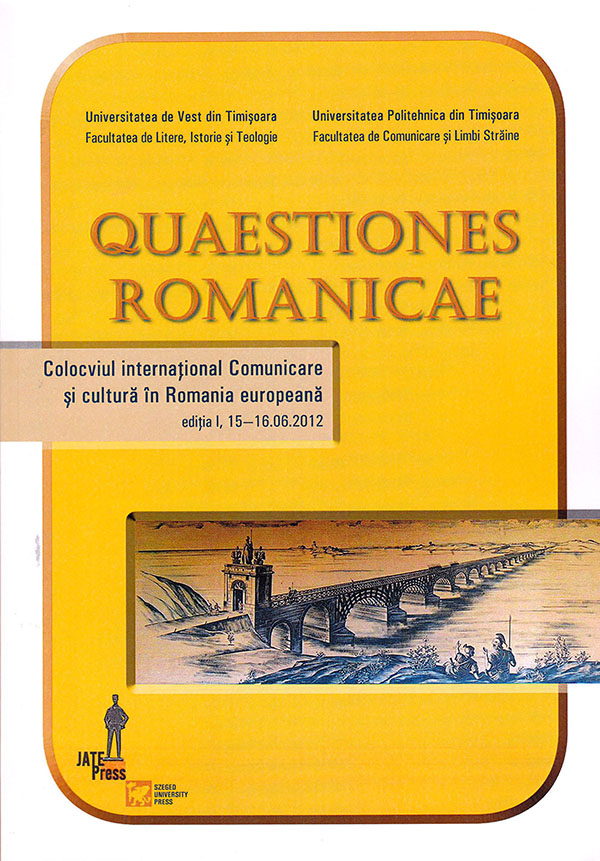Un monument baroc dispărut- biserica Sf. Ioan Nepomuk din Timişoara
Abstract: (A Vanished Baroque Monument: The Church of Saint Nepomuk in Timişoara) The church dedicated to Saint John Nepomuk, built in Timişoara between 1733 and 1736, was a landmark in the evolution of the late Baroque style in one of the border provinces of the Hapsburg Empire. The church sustained serious damage from artillery fire during the 1848 revolution and was finally demolished in 1911. Pictures taken in that year by a Piarist student, Karol Baitz, document the original aspect of the monument, and their analysis yields interesting conclusions regarding the monument. The Diocesan collection of religious art includes several altar fragments which are catalogued and labelled as being of uncertain or unknown origin. These include statues that in fact adorned the altars of the church in question, saints depicted with typically Baroque eloquence. The two rampant cherubs, considered to be fragments of the high altar of the Catholic Church from Vinga, are actually part of one of the side altars of St. Nepomuk church. Also, two of the statues considered to have an unknown place of origin are clearly integrated in the structure of one of the side altars. Another undocumented piece of information passed from one researcher to another was that the two epitaphs of David von Hübner and Joannes of Soro had been located inside the Church of St. Katherine, while we can see them placed on either side of a bye-altar of the church of St. Nepomuk, an altar having a clear baroque architectural shape and decoration. The interior decoration of the church preserves the features of the late Baroque with Neoclassical influences, being representative of the Central-European version of the style encountered in Banat.
Keywords: Baroque, lost heritage, Piarist, Nepomuk.
Rezumat: Biserica cu hramul Sf. Nepomuk din Timişoara este un reper în evoluţia stilului baroc tardiv într-una dintre provinciile de graniţă ale Imperiului Habsburgic. Implementarea normelor formale şi de conţinut aparţine ordinelor religioase catolice ce au configurat evoluţia stilului pentru întreg secolul al XVIII-lea şi începutul celui următor. Ordinele religioase ale Franciscanilor şi Piariştilor sunt cele ce vor modela aspectul acetui monument grav avariat în timpul revoluţiei de la 1848, fiind dărâmată în anul 1911. Konrad Baitz, un elev al şcolii Piariste din Timişoara a realizat documentarea existenţei acestui monument printr-o serie de fotografii alb-negu. Din analiza acestora se pot emite consideraţii inedite cu privire la existenţa acestei biserici cu o decoraţie interioară ce păstrează reperele barocului tardiv cu valenţe neoclasice. Consideraţiile conţinute de acest articol se doresc o incursiune în imaginarul colectiv al Timişoarei în secolul al XVIII-lea, transpuse în domeniul plastic al unui monument dispărut. Valenţele formale central-europene ale stilului implementat în Banat fiind cele ce vor configura baza artei moderne.
Cuvinte cheie: piarist, Nepomuk, baroc, valori de patrimoniu dispărut.
